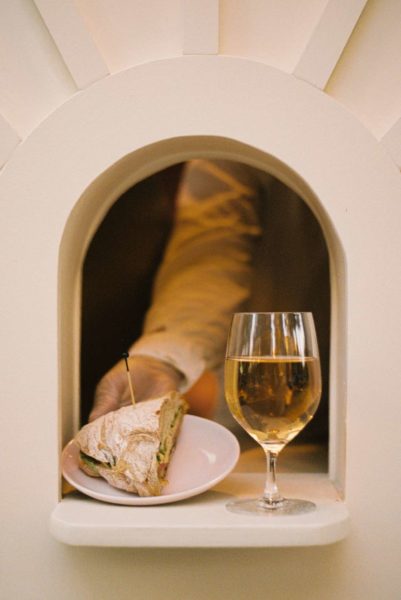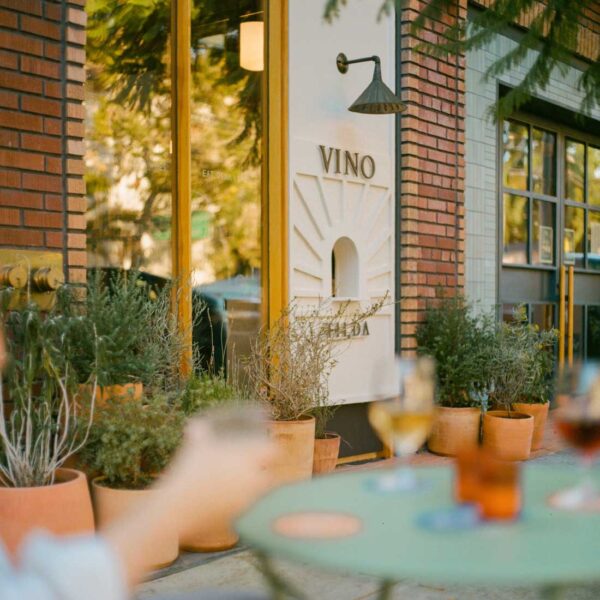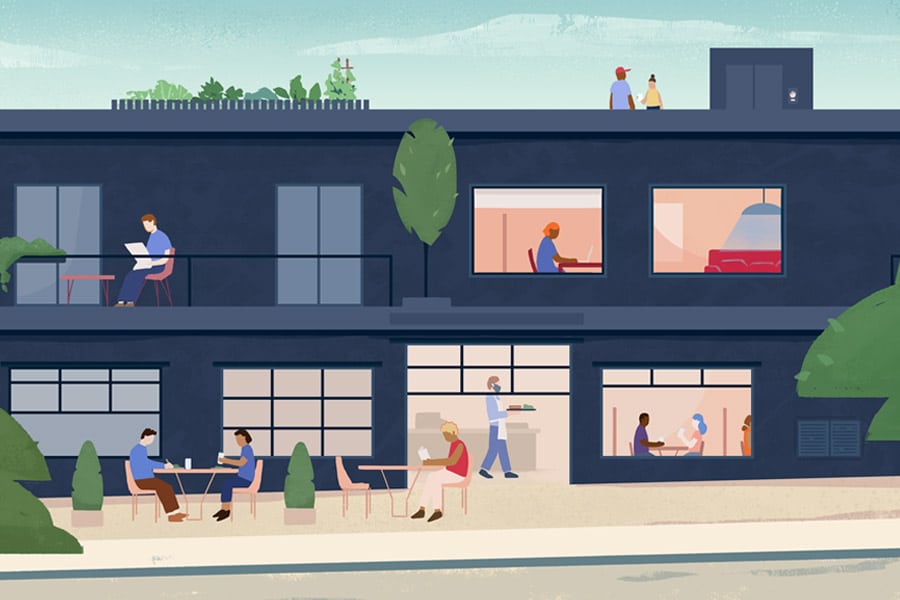Illustration by Rae Scarfó
The COVID-19 pandemic has had a significant impact on the world of architecture and construction. The industry has responded with innovative design solutions to modify existing structures and a slew of creative ideas that adapt the built environment to help reduce infection rates in aesthetically pleasing ways.
While these adaptations typically involve creating new technologies, in Los Angeles the restaurant construction industry has responded to COVID-19 with the revival of an old design solution: the Italian wine window.
A mysterious history
Nobody knows who built the first wine window. According to Christian Stayner, principal at Stayner Architects and co-owner of wine bar Tilda in L.A.’s Echo Park neighborhood, there’s varying theories about the origins of these diminutive bars.

“There is some suggestion that wine windows originated from various plagues and other public health crises,” Stayner said. “But my understanding is that, while they may have been used to preserve public health, wine windows originated as a way that the wealthier classes were able to sell products from their estates to the public.”
The narrow opening of a wine window meant that estate holders who produced extra wine would be able to offer the bounty of their vineyards to the public without opening their houses to foot traffic. In cities like Florence, “buchette del vino” offered a Renaissance version of contactless pickup. Passersby could purchase a glass of wine and sometimes a light snack like a miniature sandwich through the arm-sized opening. Money would go in and wine would come out, without the smallholders having to busy themselves with providing customer service. And when the bubonic plague swept through southern Italy in the 1630s, wine windows stayed in service while restaurants shut down.
Stayner saw wine windows in action on the twice-yearly trips he made to Rome and other parts of Italy as he prepared to open Tilda. “We were a couple of weeks to opening when the pandemic made it clear that it wasn’t going to open for a little while,” Stayner said. With his planned combination restaurant, shop and wine bar on hold for the foreseeable future, Stayner was searching for a safe way to deliver wine to Tilda’s customers.
The answer was a newly installed Italian-inspired wine window.
Construction was simple. “I wouldn’t say it was a very drawn-out design process,” Stayner said. “We just took out a door that was there and used some scrap plywood that we had around from the construction of the building. We had some letters that we had salvaged from a client who was going to throw them away that we used to spell out “Tilda.”
The resulting window has become something of a neighborhood landmark, drawing interest by creating a highly “Instagramable” backdrop for socially distanced wine drinkers throughout the area.
Why wine windows?
Stayner isn’t the only L.A.-area wine professional adapting the wine window to contemporary use. Throughout the city, as restaurants, wine shops and bars adapt to a shifting landscape of COVID-19 regulations, wine windows provide a safe, socially distanced way to connect to the community and provide a memorable level of service.
“It’s been a really valuable way to encourage social engagement with the people who visit Tilda,” Stayner said.
John Himelstein, owner of the Vietnamese restaurant Gingergrass in L.A.’s Silverlake neighborhood, said their wine window was designed to draw customer attention to the restaurant’s Black winemaker partners and create a safe space for community interaction.

“I do think that it’s better to keep people out of the restaurant,” he said earlier this year, when pandemic restrictions were at their peak, “and the window works nicely. The expectation of service has changed during the pandemic, and this gives people a way to come by and engage with us without going into a private space.”
Gingergrass’ wine window serves multiple functions: as a visual signifier similar to a classic French bistro chalkboard, as well as a safe space for patrons and staff to interact.
For Coly Den Haan, owner of popular wine shop Vinovore, which highlights the work of female winemakers, the wine window has been a way to reintroduce intimacy into the strange new world of socially distanced shopping.
“We were already a few months into the pandemic, and although our customers became used to ordering online, we could see people were missing that tactile shopping experience,” she said. “Even though technically we could allow people inside the shop, our staff really didn’t feel comfortable, especially given how small we are. I started thinking about how we could give people back our personal wine shopping touch without putting anyone at risk, and the window seemed like it could be the fix.”
Adding a wine window to Vinovore’s facade wasn’t difficult. “Considering we already had an all-glass storefront, it wasn’t too challenging,” Haan said. “We were able to remove a glass panel and replace it with a new one with a window in it. Once that was in, we treated the whole storefront with a UV film to block heat and added an ADA compliant flip-up shelf. From there, we bolted custom wooden shelves to the interior of the aluminum frame to display wines for people to peruse from the outside.”
A window into the future
Most of the business owners interviewed for this story said they anticipate keeping their windows intact even after pandemic restrictions are fully lifted.
For Stayner, the window has provided a fun way to show potential customers that Tilda is open for business. “For many retailers, the drop in foot traffic and mobility for people has made it hard to be visible,” he said. “Part of the reason for doing the wine window is just to get something that could be photographed and shared online, because there’s not people out on the street any longer.”
Himelstein agreed. “We’ve started to see people coming back for wine they like,” he said. “I think that the window has helped communicate what we’re trying to do and to showcase our partners’ work.”
Haan said that Vinovore’s wine window will likely remain a fixture in the shop post-pandemic. “It’s hard to know how things will evolve in our world, but as of now we feel the wine window is here to stay,” she said. “We love our wine window and so do our customers. In fact, perhaps you can look out for a Vinovore wine window coming to a neighborhood near you.”












